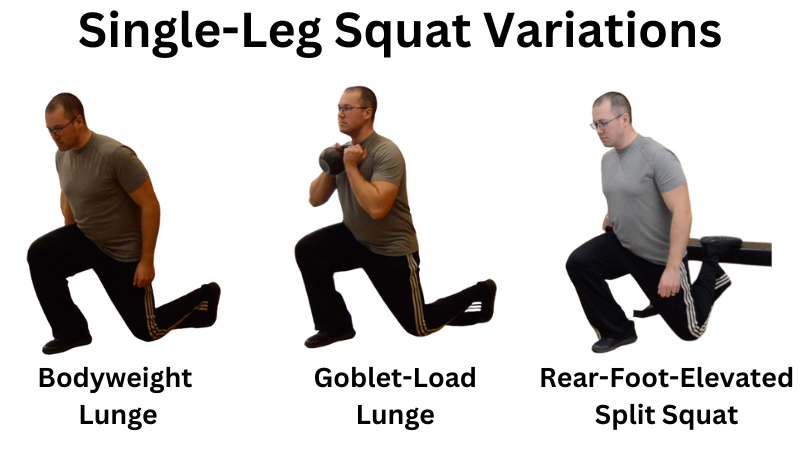Move of the Month: Single-Leg Squats
by GRP strength coach Will Ruth
I use both double-leg and single-leg squats with all athletes I coach for different reasons. Runners perform more of a single-leg task, rowers perform more of a double-leg task, and skiers do both. Single-leg squats are valuable for all athletes to improve lower body stability, match outputs between left and right sides of the body, and either enhance specific physical capacity for sport performance (running and skiing) or fill a gap that the sport training neglects (rowing).
When I talk about “single-leg squats,” athletes often assume I mean the “pistol squat,” which is the fully unsupported single-leg squat with the non-working leg completely off the ground. This is the most advanced single-leg squat, and one more like a gymnastics movement than a strength-building exercise, and one I rarely use.
Watch my demonstration video for my go-to variations of the standing lunge, walking lunge, reverse lunge, rear-foot-elevated split squat, lateral step-up, front step-up, and lateral lunge. I use one of these variations in at least one strength training session per week.
Key technique pointers:
Keep pressure balanced evenly between forefoot (ball of the foot) and hindfoot (heel), and inside of the foot (big toe side) and outside (pinky toe side). Athletes often shift forward onto the ball of the foot to maximize quadriceps contribution, but this reduces glute muscle contribution, decreases stability, and misses some benefit of the exercise.
Use a 2-to-1 lowering-to-lifting tempo with good control on the descent of each rep.
The goal range-of-motion (ROM) is the thigh of the forward/working leg at a parallel position to the ground at the bottom of each rep. The back knee will often touch the ground in this position as well. However, use as much ROM as you can safely control with good technique, and then try to improve ROM from there.
Add load only once you can achieve good technique, tempo control, and full ROM. An additional benefit of single-leg squats is their high leg output with minimal load on the spine, so we aren’t in a hurry to load these up. We focus on balance, stability, and bodyweight development through the progression. When we add load, I prefer to do so by holding a dumbbell or kettlebell in the goblet squat position at the chest, instead of at the sides. This keeps the torso more upright with better ROM. A weighted vest also works well. The strongest and most skilled athletes might use a barbell to load rear-foot-elevated split squats, but this is rare even on the GRP so far.
My preferred way to strength train the lower body is double-leg exercises for lower rep strength and power training (3-5 sets of 3-8 reps with 2-3’ rest between sets), followed by single-leg exercises for higher rep coordination, strength, and muscular development (2-4 sets of 8-15 reps with 1-2’ rest between sets). This gives us the best of both worlds.
With any single-limb exercise, train the weaker side first and then only match that output in reps or weight with the stronger side. This is how we can gradually correct imbalances between sides, instead of making it worse by training the stronger side harder and continuing to make it even stronger.

